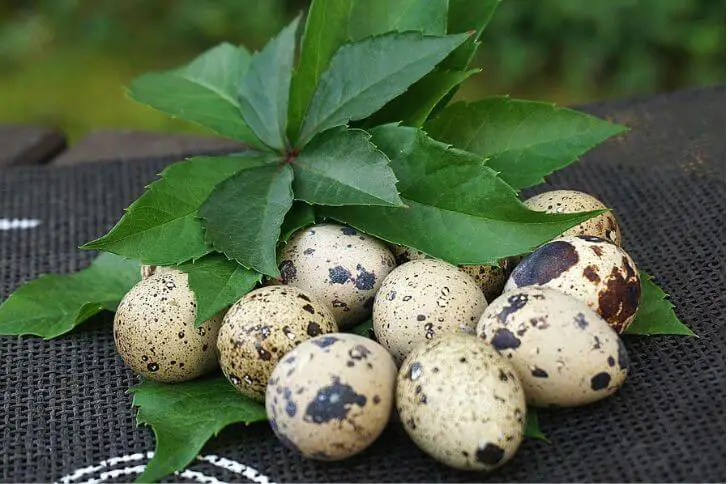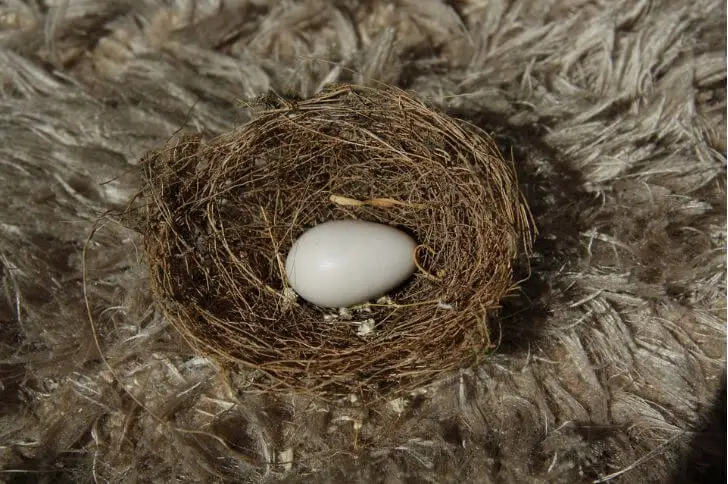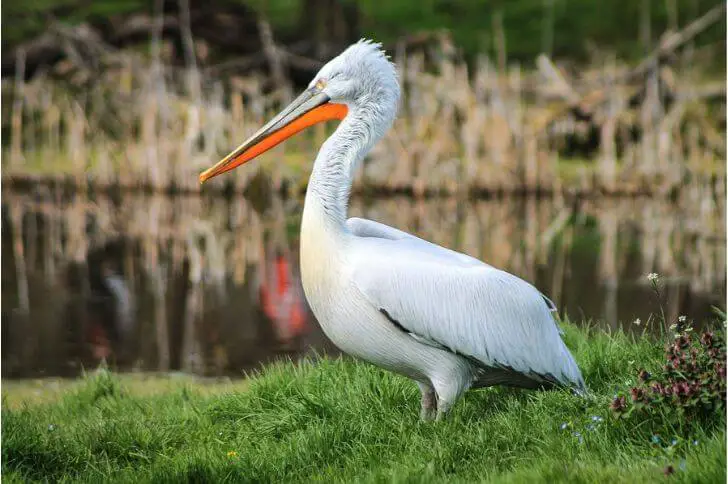One of the most popular wild birds of the United States is the downy woodpecker. They are small, stocky birds with black and white plumage. Males sport a red patch towards the back of their round heads, while females do not. They can be found in woods and forests across the continent.
In the article below we’ll delve deeper on the early stages of this bird’s life; the life of a downy woodpecker juvenile; from hatching to when it leaves the nest.
What time of the year do downy woodpeckers have babies?
Female downy woodpeckers lay eggs in April and in some regions they lay as early as March. From April to July you can watch the birds incubate the eggs and young ones being born and growing to the juvenile stage.The female will lay 3-7 eggs in a nest that she has excavated in a tree.
Baby Plumage
The young birds are altricial; baby downy woodpeckers are born blind and naked.
They are pale pink in color, with dark spots on their backs. As they grow older, their plumage turns black and white like their parents. At this point they are completely dependent on their parents for food and shelter.
What do juvenile downy woodpeckers look like?
Do chicks share plumage with adult birds? Yes, they have similar coloring on their upperparts and underparts. Upperparts are black and white. Wings are also black with white spots. Underparts are white. And what’ll help you tell them apart from adults is the red cap. Downy woodpecker juveniles are slightly smaller than adults.
Do juvenile downy woodpeckers have red?
Yes, juvenile male downy woodpeckers do have a bright red cap that will help you tell it apart from the female.
Telling sexes Apart
There are a few ways to tell if a juvenile downy woodpecker is male or female. One of the best ways is looking at their head; the juvenile male will have a red cap while females do not.
Also, you can listen to the sound. Male downy woodpeckers make a higher-pitched sound than females.
What do juvenile downy woodpeckers eat?
Insects are the primary food source. They will also eat berries,and seeds. A juvenile downy woodpecker needs to consume about 60% of its body weight in insects each day.
A study was conducted to determine what kind of insects baby downy woodpeckers prefer. The study found that the most preferred insect was the green caterpillar followed by beetle larvae and corn earworm. The least preferred insects were houseflies and moths.
Related Read: Learn about the juvenile red-bellied woodpecker
How long does it take a fledgling downy woodpecker to fledge?
The average length of time it takes for a downy woodpecker to fledge is 20-25 days.
During the first few days after hatching, the parents will feed the chick by regurgitating food into its mouth. The parents will continue to feed the chick until it is able to fly and hunt on its own.
The fledgling period is a crucial time for the downy woodpecker, as it is learning to fly and hunt. If it does not receive enough food or if the weather is bad, it may not survive.
Molting process
Molting is when the downy chic sheds its feathers and grows new ones. Downy woodpeckers go through their first molt between late June and early August, when they are about 6-8 weeks old. During this time, they will lose all of their baby feathers and grow new adult-like feathers. They will go through one more molt in their first year.
How long before baby downy woodpeckers leave the nest?
In about three to four weeks, baby downy woodpeckers are ready to leave the nest. The parents will help the young ones take their first flights and then will continue to feed them until they are able to find food on their own. After a few weeks of practice, the young woodpeckers will be ready to start their life independent of their parents.
What to feed a baby woodpecker?
If you find a youngone, you can help it by giving it some food. The best food for a downy woodpecker fledgling is insects. You can catch insects by using a net, or you can buy them at a pet store.
Fledglings also need water. A dish or from a dropper works fine. Make sure the water is clean and fresh.
Downy woodpecker fledglings need to eat every few hours, so check on them often. If the fledgling does not seem to be getting better, or if it is injured, take it to a wildlife rehabilitator for help.
Where do downy woodpeckers sleep at night?
In the trees, of course! At night, these little birds roost in tree cavities or on small branches. They sometimes tuck their heads under their wings to stay warm. In the morning, they’ll be back at it again – tapping on trees, looking for insects to eat!
Can fledgling climb trees?
Yes, Downy woodpecker fledgling can climb trees.
Do downy woodpeckers return to the same nest every year?
The answer to this question is not definitive, as there is not enough research to say for certain. However, some experts believe that downy woodpeckers may return to the same nest year after year.
One reason is that these birds have a strong attachment to their nesting sites. Once they find a place that meets their needs, they are likely to stick with it. Another reason is that downy woodpeckers mate for life, so they may return to the same nest in order to raise their young together.
There is still much we don’t know about the nesting habits of downy woodpeckers, but it is clear that they are fascinating creatures.
What do you do if you find a juvenile downy woodpecker
If you find a juvenile downy woodpecker, the best thing to do is to leave it alone. These birds are very shy and will not approach humans unless they are sick or injured. If the bird appears to be healthy and is not in immediate danger, it is best to let it go about its business.
However, if the bird appears to be injured or in distress, you can try to help it by providing food and water. Downy woodpeckers consume insects, so you can try putting out a small dish near where you found the bird. You should also contact a local wildlife rehabilitation center for further instructions on how to care for the bird.
Sources:
https://www.audubon.org/field-guide/bird/downy-woodpecker
Hi, my name is Steve. My friend and I started the spanishbirdguides.com to share our passion with other like-minded people. So, if bird watching is your thing, you’ll love this blog. I’ll share what I’ve learnt about both local birds and those found in other parts of the world. Also, I’d love to hear your experiences.



